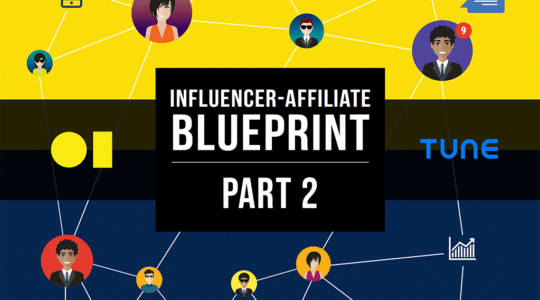
Photo by maria pagan on Unsplash
You’ve built an awesome new product. You’ve already set up your online store. You’ve put up a few advertisements. And now you wait for the millions of people to come to your site and buy, buy, and buy! Unfortunately, that doesn’t always work because there are so many new products, and shoppers are continuously bombarded by competing ads everywhere they click. Perhaps you might want to try an affiliate marketing program.
Affiliate marketing is simplified as paying someone (usually a company that runs affiliate programs, or a popular website, or even an individual) to send qualified visitors to buy your product. When a product is purchased, then that someone receives a commission from the sale of the product.
Affiliate marketing programs are popular for both small companies trying to find their first new customers to multi-billion dollar companies, such as Dell and Amazon, who use affiliate programs to grow their revenues at the expense of margin.
If you want to build an affiliate marketing program, you have to be good at affiliate marketing management. Here are a few things that you should focus on from the beginning:
1) Get the Best Affiliate Tracking You Can Buy or Build
Because you have to pay either a set dollar amount per sale or a percentage of total sales, it’s essential to confirm the source of every sale. Many companies that facilitate affiliate deals have their own cookie systems to ensure that customers are tracked from the time they see an advertisement for your product on a vendor web site, through the time when that customer enters your e-commerce site, and then through the time when your product is purchased by that customer. If you are managing your affiliate marketing program in-house, then you will need to buy or build a transparent system that can handle all tracking.
For more tips on how to get your tracking right, download our guide: How to Become a Track Star.
Either way, you still want to make sure that you have your own affiliate marketing tracking system where you match up each one of those incoming customers to a real purchase on your e-commerce site. Having good tracking data means that you can protect yourself from any discussions that might arise if your company’s sales numbers do not match your affiliate vendors’ numbers. Some basic data may come from e-commerce tracking through Google Analytics, but you also want to ask your backend developer or database administrator if you can get that data directly from your sales management system.
2) Know How Much You Can Spend Per Lead
You need to understand how much revenue and margin that you think you’re going to make per each customer lead before you can start negotiations on how much you will pay in affiliate commissions. That way, you can manage affiliate expectations as well as your own.
If you are selling a physical product, then use the cost of the product and retail price to find gross margin. That margin is what you will sacrifice with affiliate fees in order to gain total unit sales and an increase in revenue. If you know your own margin, and your expected return rate, early planning will keep you margin positive even at high sales velocity.
If you are selling a subscription product, then you should understand how long the average subscriber will stay subscribed and how much that subscriber will pay per month. That understanding can provide a higher maximum amount that you can spend per customer while maintaining profitability. The risk is that if what you paid per customer is more than a single month’s subscription, it could take a few months to earn back what you had spent on that user.
If you are selling a free-to-play mobile game that has a zero download cost but in-game virtual goods, you need to be very good with your data. You can determine how many days an average player will keep playing your game and how much and when that player pays for in-game items. Keeping acquisition costs below the revenue per player is the first step, but you will also need to understand how many days it takes for every affiliate channel to pay back that cost. It could take many months for certain channels to be profitable against just the marketing spend, making proper affiliate marketing management a must.
3) Know Where Your Affiliates Are Advertising
You might already be invested in paid search marketing or you might have direct marketing deals for some sites. Advertising networks with affiliates who are not managed closely might start competing with you for your own keywords, copyrights and trademarks. Depending on how they promote you, they might be able to get their search engine rank higher than your company marketing site. This means that for organic search, you might end up paying for a sale that should have been free. It’s good to set some simple affiliate management rules for what each partner can do and where they can advertise — otherwise it’s like paying a company to compete with yourself, and that means you will be always paying for the most expensive option than the cheapest.
A good thing to do is always ask each new affiliate for screenshots of your placement. Understand what types of placement you are getting on their networks and understand what tools they are using. You should also ask for what demographic audience they are targeting for your product so you can manage how they use your marketing materials more effectively.
4) Always Measure Results Daily
Even with a solid affiliate marketing partner, I believe that there can be problems at times with their data, and comparing their data with your tracking data becomes very important. Not all partner sites are as transparent or well-managed as they should be, and it’s important to see if there are good or bad trends in the sales data by affiliate program partner.
If one of your affiliates goes from 10 sales per day to 1,000 sales on a random Wednesday, you should first check if everything looks correct or whether there are data errors. If it’s a real improvement, see if those new customers are behaving like the long-term 10 sales per day. If it looks profitable, then open your budget and see if you can again replicate that success by getting 10,000 sales from them.
If those new thousand-odd sales look like customers who aren’t the same quality as the typical 10 daily, then it might be in your best interest to shut it down rather than deal with 3,000 unprofitable customers by Friday and 5,000 by Monday. Do not forget, you are paying for them, so spend your money on good customers (and good affiliate marketing management). Here are some extra tips on how to get affiliate marketing results.
5) Build Good Affiliate Relationships
There are many elements about trust in affiliate marketing. As a buyer of these services, make sure that you can pay in a timely manner. Work with your management partners in finance (or whomever is running finance) to understand how much you can spend. Set up payment terms that are reasonable, like net 30 versus all pre-paid, and make sure that the affiliates you work with can agree with that schedule.
Spend time cultivating the best program partners and cut non-profitable dead weight affiliates. It’s very easy for an affiliate to promise a performance or lead number, but it’s far more difficult for them to deliver those customers in volume, and again that’s why you want to be the buyer that they want to work with long-term. It’s a marathon, not a sprint.
Affiliate Marketing Management for the Win
At long last, if you have done your affiliate marketing management correctly, you will have found new channels to reach those millions of customers who are perfect for your product.
Get more tips and tricks for managing affiliates and programs in our newest e-book, “10 Mistakes to Avoid When Starting an Affiliate Program.”
This post was originally published in October 2013 and has been updated for accuracy and comprehensiveness.
Author
Becky is the Senior Content Marketing Manager at TUNE. Before TUNE, she handled content strategy and marketing communications at several tech startups in the Bay Area. Becky received her bachelor's degree in English from Wake Forest University. After a decade in San Francisco and Seattle, she has returned home to Charleston, SC, where you can find her strolling through Hampton Park with her pup and enjoying the simple things in life.





thanx for your tips…
this tips are really helpful to me for marketing program
Many blogger still dependent on ads for main income but affiliate marketing also matter a lot. Thanks for providing this useful info. http://top7lists.net
Recently
I earned $500 in a month as affiliate by selling software. The name of the
software is Craigs Dominator Pro. Now, I have got the task to promote the
affiliate program to other affiliates because I thought others would love to
sell the software in their site. The software is very useful and makes online
advertising on Craiglist super easy!
To sign
up for the affiliate program go to this link (http://www.craigsdominatorpro.com/?page_id=187), fill out the form and submit,
you will then receive an email with login information. Follow the information
and login to the affiliate program. To know more about the product you can
visit the page of Craigns Dominator Pro (http://www.craigsdominatorpro.com) and about the affiliate program
visit affiliate page (http://www.craigsdominatorpro.com/affiliate-home/).
Dear Admin im looking some best Affiliates programs for my web site Bright Verge plz share some golden tips…….